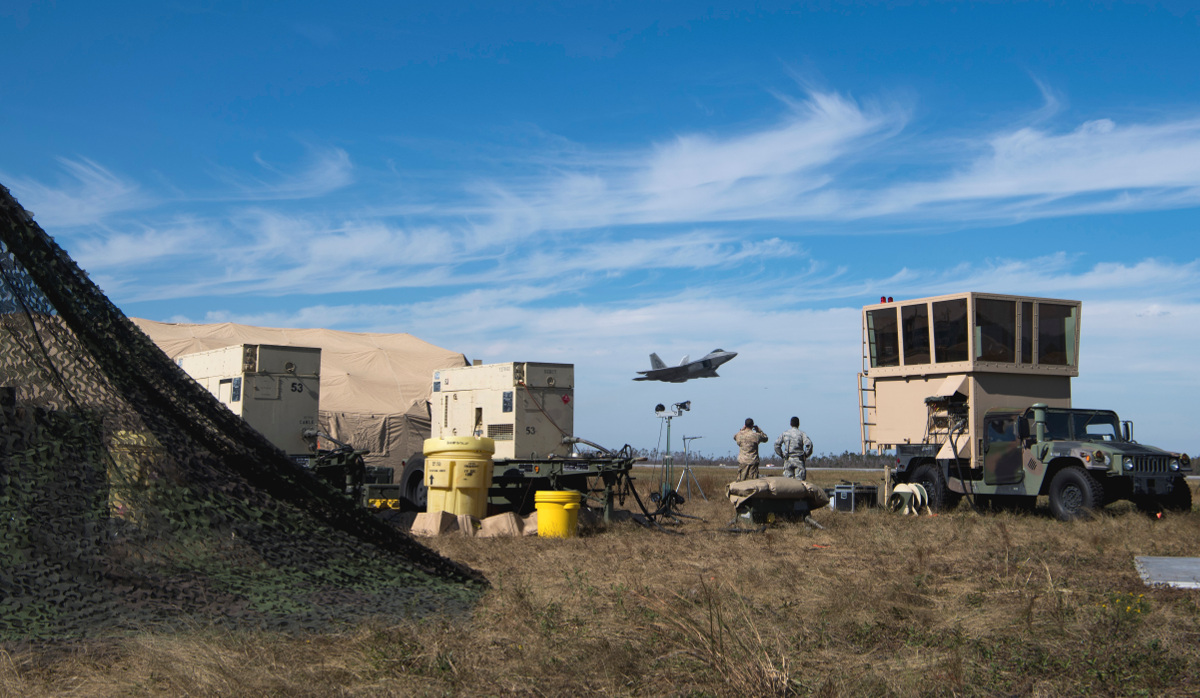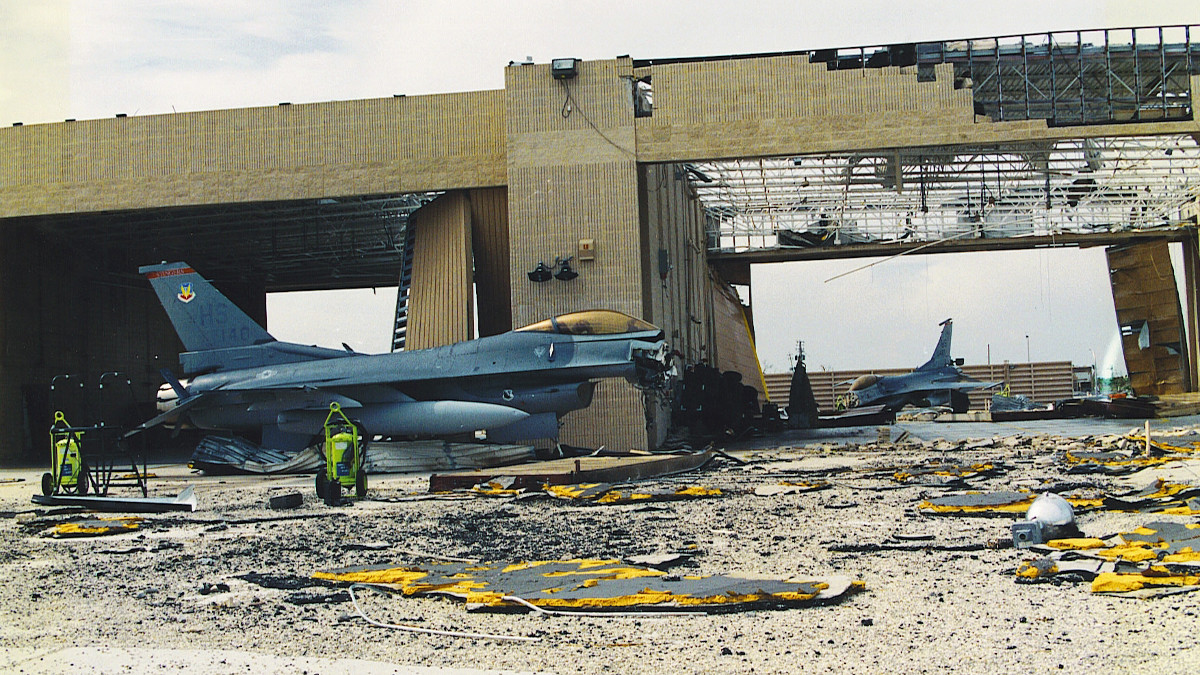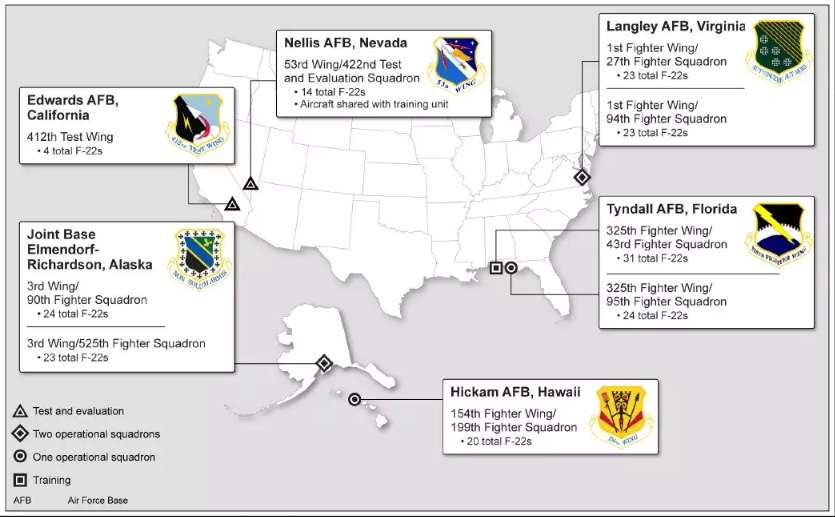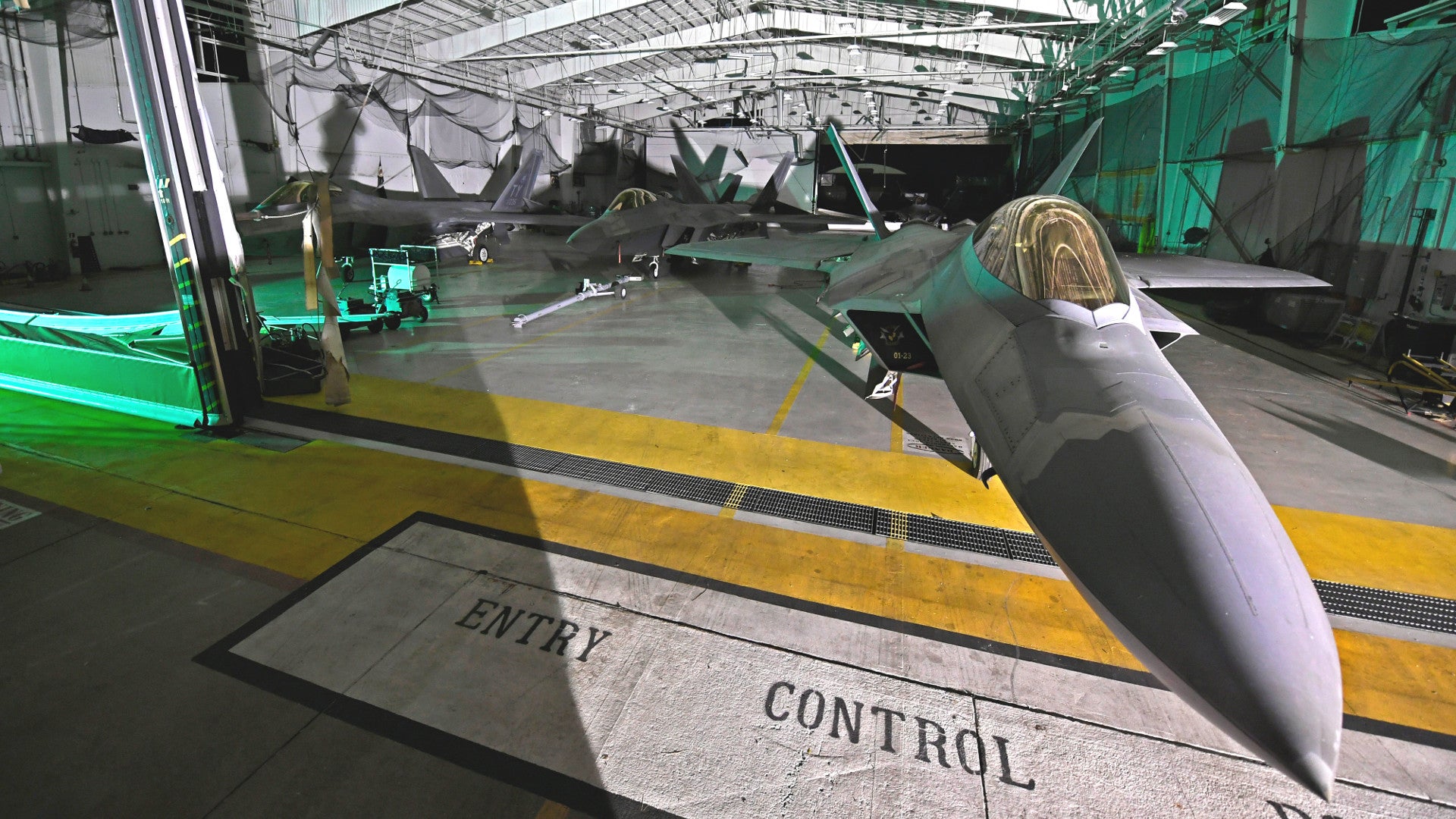The Air Force appears to have caught a much-needed break after Hurricane Michael devastated Tyndall Air Force Base in October 2018. Despite initial concerns, reports indicate that the handful of remaining F-22A Raptor stealth fighters that rode out the storm at the base will soon fly out to join their companions at Langley Air Force Base in Virginia before heading off to other Raptor operating locations. However, questions still remain about whether or not those jets will ever return permanently to Tyndall.
On Nov. 2, 2018, Secretary of the Air Force Heather Wilson told reporters during a conference call that the service had not made any decision yet on whether it would send the more than 50 F-22s that had been stationed at Tyndall before the storm back to the base in the future. Later that same day, the Air Force announced that F-22 units would relocate elsewhere until further notice.
The 43rd Fighter Squadron, an F-22 training unit, along with the supporting 372nd Training Squadron, Detachment 4, will move the bulk of their operations to Eglin Air Force Base, also in Florida. The 2nd Fighter Squadron, which provides adversary support for the 43rd with its T-38 jet trainers, will also move to Eglin. “Academic and simulator facilities at Tyndall will be used to support training requirements, as well as Tyndall’s surviving Low Observable maintenance facilities,” the Air Force statement read.
Personnel and F-22s assigned to the operational 95th Fighter Squadron will get dispersed to other operational Raptor squadrons at Langley Air Force Base in Virginia, Joint Base Elmendorf-Richardson in Alaska, and Joint Base Pearl Harbor-Hickam in Hawaii. Those of Tyndall’s F-22s that were airworthy before Hurricane Michael had flown to Langley already and that base will continue to serve as an immediate regrouping and staging point for the remaining Raptors now leaving the base.

Various other units that had called Tyndall home will also relocate to other sites temporarily. The Air Force expects the 601st Air Force Operations Center, a critical command and control node for domestic air defense and other homeland support missions, to be back up and running at the base by Jan. 1, 2019. A host of other support elements, including 53rd Air-to-Air Weapons Evaluation Group, which provides various range control and operational test and evaluation support, are still at Tyndall and will remain there during the recovery effort.
As of Oct. 31, 2018, “only a couple” of the approximately 17 F-22s that were still at Tyndall when the storm hit were still at the base, according to Air Force Magazine. The Air Force expected the rest of the Raptors to leave “in a matter of days, not weeks,” that report said. The status of multiple QF-16 target drones, T-38s, and Mu-2 training aircraft, which also had to weather the hurricane, remains unclear. Though they’ve received less public attention than the Raptors, the QF-16s are also extremely important for the Air Force’s training and weapons development requirements and we have yet to receive any real update on their fate.
The last of the F-22s will head to Langley for a closer inspection to determine the full extent of any damage, but the fact that crews at Tyndall could make them airworthy is a good sign that any issues may be more limited than many initially feared. Hurricane Michael ripped the roof off of Hangar 5, exposing the aircraft within to the elements and subsequently raising concerns about the structural integrity of that building. Others had their doors torn off and holes punched in their walls.

But the amount of time it will take to rebuild Tyndall’s infrastructure, 95 percent of which sustained significant damage during the hurricane, will almost certainly impact when and if the F-22s return at all. Air Force engineers already say that a number of structures on the base are unsalvageable and are still assessing others that may turn out to be structurally unsound. Secretary Wilson said it will take years to finish rebuilding the facilities.
A similar situation occurred after Hurricane Andrew slammed into Homestead Air Force Base in 1992. Recovery crews subsequently dismantled a number of heavily damaged, non-hardened structures. As the Air Force rebuilt that base, the U.S. military made a decision to drastically reduce operations there and refocus its primary function, eventually redesignating it as an Air Reserve Base less than a month after it reopened in March 1994. Today the base serves primarily as the home of one Air Force Reserve F-16 squadron, a remote alert site for F-15C/Ds from 125th Fighter Wing in Jacksonville, and as a base of operations for a handful of Customs and Border Protection aircraft.

Florida authorities are clearly pushing for the base to return to its previous operating level, given that Tyndall is responsible for generating millions of dollars in the local economy and supporting 20,000 jobs in the surrounding community, according to the state’s Republican governor Rick Scott. It remains to be seen whether it will turn out to be cost-effective for the Air Force to do so, especially as the U.S. defense budget contracts once again.
In addition, in July 2018, Government Accountability Office report recommended consolidating Raptor units to improve readiness and reduce logistical strains. In effect, the Air Force is already doing this with its decision to sprinkle elements of the 95th Fighter Squadron among other F-22 units at other locations. The service’s press release insists these moves are temporary, but there is a distinct possibility that that could change in the future if the shift in operations proves useful and workable.

“I just let them do what they were trained to do, and here we are, three weeks later,” U.S. Air Force Colonel Brian Laidlaw, the 325th Fighter Wing’s commander and the senior officer at Tyndall, told Air Force Magazine of the personnel working to restore the base’s functionality. “I couldn’t be more impressed by how much progress we’ve made, and I could not be more proud watching them do what they are trained to do.”
At the same time, Tyndall’s character has already changed as units have and are relocating to continue their work elsewhere. It remains to be seen how many of those elements, including the F-22s, ultimately come back to the base.
Contact the author: jtrevithickpr@gmail.com
